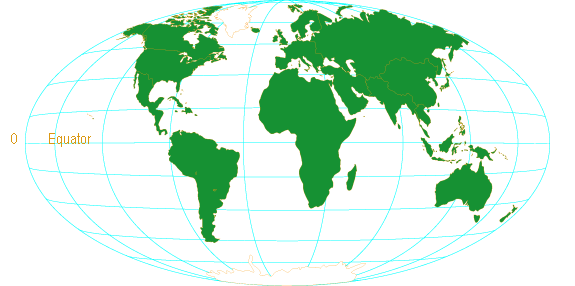equator

Earth's equator. Credit: NASA.
In general, the equator is the great circle on the surface of a body formed by the intersection of the surface with the plane passing through the center of the body perpendicular to the axis of rotation.
The terrestrial equator is an imaginary line drawn on the Earth's surface such that all points on it are equidistant from the north and south poles, i.e., it is the line circling the Earth at 0 degrees latitude, dividing the north and south hemispheres.
The celestial equator is lies directly above the Earth's equator and is used as a reference to determine the position of a star or other celestial object using an astronomical coordinate system such as that based on equatorial coordinates.
Equatorial bulge
An equatorial bulge is the extension of the equator of a spinning body, and the subsequent flattening of the poles, caused by rotation. It is most conveniently thought of as being due to an outward centrifugal force (although this is really a fictitious force). Equatorial bulges are very noticeable in the case of the planets Jupiter and Saturn, which are large, spin rapidly, and are composed of fluids that are easily deformed. The Earth also has an equatorial bulge, one effect of which is to contribute to a variation in the acceleration due to gravity with latitude. The bulge also causes the planes of satellite orbits inclined to the equator (but not polar) to rotate slowly around Earth's axis. For more on this, see station-keeping.


